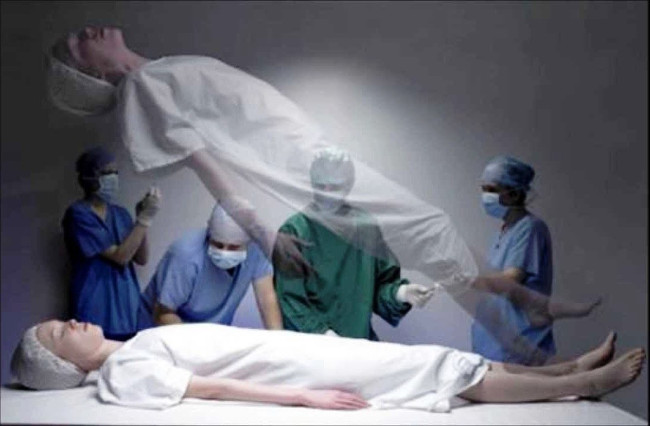The existence of the soul from a scientific perspective
Many scholars believe that the soul is an invisible thing that exists after death, has a close relationship with people's memories and emotions.
Many religious thinkers since ancient times believed that everyone had a soul . This view is supported by the philosopher Plato (424 - 348 BC) and René Descartes in the 17th century, according to Live Science.
Plato said, people do not learn new things in life but they only recall their knowledge from previous lives . Therefore, man must have a soul.
Centuries later, Descartes wrote "Passions of the Soul" , translating as "The Passion of the Soul" . He argued that the body and mind part of a person were two things that were completely separate. "Because we have no idea of the body when we think, there is reason to believe that all kinds of thoughts that exist within us belong to the soul," Descartes wrote.

The functions of the soul can all be taken up by the brain.(Artwork: Viralportal).
One of Descartes's arguments was to prove the existence of the soul in relation to the brain . The brain is a part of the body that can be divided, composed of different parts. The soul is an inseparable whole, eternal, indivisible. Therefore, Descartes concluded that the brain and soul must be different. However, advances in the field of neuroscience show that Descartes' argument is wrong.
In the 1960s, Roger Sperry, a Nobel Prize-winning scholar, pointed out that human minds and consciousness can divide , rejecting part of Descartes's theory.
Sperry studied the corpus callosum (corpus callosum) of many patients. This is the part that connects the left hemisphere and the right brain. In surgeries, Sperry severed the bottle of the patient to control the spread of seizures, prevent and reduce the transmission of perceptual, sensory, motor and cognitive signaling between the two hemispheres Brain.
Sperry points out, each brain hemisphere can perform tasks and process information independently of the remaining hemisphere. In essence, this means that brain activity creates a double consciousness. Thus Descartes is not right to assert that the brain can divide, but the soul (understood as consciousness, consciousness) does not.
In 1949, psychologist DO Hebb declared human consciousness as a combination of activities within the brain.
The brain is an organ that is linked to our entire body, the outside world, and our experience. Brain damage from accidents, dementia or birth defects will affect human personality.
According to Plato, one of the functions of the soul is to store memories. But just a strong hammer on your head can lose your memories for years. If the soul is an invisible entity, separate from the physical body, it will not be injured by hammering and the memory stored in the soul will not disappear.

The brain is an organ that is linked to our entire body, the outside world, and our experience.
Neurological activities in the brain are responsible for cognitive and emotional dysfunction in people with autism.Brain activity has the ability to change people's emotions and moods. The soul is absolutely unnecessary for this process.
Medications that change people's mood provide more evidence against the presence of the soul. If you create a chemical imbalance in the brain, such as reducing the hormone dopamine, noradrenaline and serotonin with tetrabenazine, you can cause depression for some people. Reverse depression can be improved by drugs that enhance the function of the transmitter in the brain.
The brain is the place where thoughts, love and hatred, awareness, character formation, belief, keeping memories, making decisions, not souls, DK Johnson researcher in Dai Study Cambridge, England, conclude.
- Collect evidence of souls from a scientific perspective
- Mystery of the soul
- Learn about the soul from a scientific perspective
- Soul: Does not exist forever, does not harm anyone
- Quantum theory of awareness: Soul is a form of information
- All things about love from a scientific perspective
- the existence of the soul, life?
- Scientific perspective on apocalyptic hypotheses
- Milk looks from a scientific perspective
- 'The month of the soul' - The taboo and should do
- Explain the science of the image of the soul leaving the body
- The top American doctor believes in
 'Fine laughs' - Scary and painful torture in ancient times
'Fine laughs' - Scary and painful torture in ancient times The sequence of numbers 142857 of the Egyptian pyramids is known as the strangest number in the world - Why?
The sequence of numbers 142857 of the Egyptian pyramids is known as the strangest number in the world - Why? History of the iron
History of the iron What is alum?
What is alum?